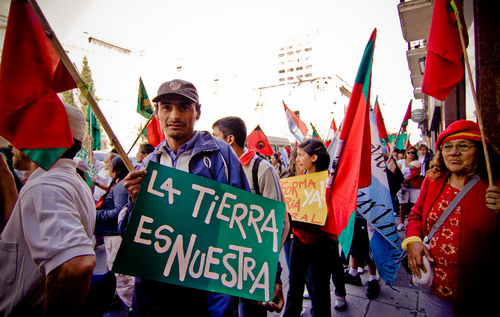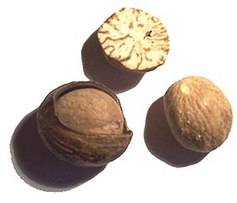Jiro Ono has been making sushi since forever. At 85, he's still making sushi; over and over we watch his hands forming the perfect rice bundle. In The Story of Sushi, by Trevor Corsin, he writes:
A sushi chef wants the grains lined up along the length of the finished rectangle. That way the grains will stick to each other without lots of extra squeezing. A tightly packed nigiri [hand-packed sushi] is bad. The chef's goal is a piece of sushi just firm enough to stay in one piece while the customer handles it, but loose enough that it will immediately disintegrate in the mouth. When a perfect nigiri crumbles apart on the tongue, the grains of rice mingle instantly with the fish, combining tastes and textures. The sensation some diners feel is gratitude because the chef has calibrated the sushi so perfectly that they hardly have to chew.
Researchers have conducted MRI scans of nigiri made by master sushi chefs. The scans reveal that a master chef's nigiri disintegrates easily on the tongue because it contains more empty space than a nigiri made by a novice. Scans of nigiri made by sushi robots showed a product tightly compressed, with almost no empty space on the interior at all. [pp. 91-92]To watch Jiro Ono's hands, and the hands of his son and apprentices, shape and re-shape grains of rice into perfectly tensioned rectangles is hypnotic: their hands perform a precise set of actions over and over again. And at the end of each series of actions are sushi of perfect size and tension.
Anthony Bourdain has, of course, eaten Jiro Ono's sushi: fifteen courses in twenty minutes. Bourdain is one of those people I both admire and envy: he writes well, eats well, and gives great food-gasm.
But this film is about more than one man making sushi in a ten-seat restaurant (Jiro runs the only Michelin 3 Star restaurant with so few seats and no washroom in the restaurant, and yet the Michelin guide said "three stars is the only rating suitable for this restaurant. It is worth traveling to Japan just to eat there."). It is about old-school standards. An apprenticeship runs about 10 years under Jiro.He says, "Once you make a decision to do something, learn to love it. It must take all your time." He knows what he's talking about; he's been working and making sushi since he was ten years old. At one point the comment is made "What's the difference between Jiro at 40 and now? He's quit smoking." Jiro talks, in the film, about doing the same thing over and over until you're good at it. But to seek perfection, you must then continue to do it over and over, all the while looking for ways to improve.
In the trailer (above) you see one of the changes that have happened in the last 15 years: his son now rides down to get the fish every morning. After Jiro had a heart attack at age seventy, this job passed to his son. But the men Yoshikazu meets at the markets are as old-school as Jiro. They too have served long apprenticeships, learned their trade so deeply as to dream of it as Jiro does of sushi. The tuna purchaser who reads tuna with his fingers, massaging a bit of fish and saying "The way it feels tells me how it will taste." After buying from the same tuna supplier for so many years, Jiro, and by extension Yoshikazu, trust his supplies. The same is true of the rice supplier, who won't sell the rice he sells Jiro to anyone esle--unless Jiro says to--even though he knows that the quality of the rice he sells to Jiro still requires Jiro's techniques in preparation to be as good. Yet he reserves one grade of rice for the sushi master he's sold to for so long.
Jiro's world, the world of this film, is a world where nothing replaces time and practice. We hear from Yoshikazu how many apprentices simply disappear. We also meet the ones who stay. Jiro explains that by the time he prepares the sushi, 95% of the work is already done by his crew. He has the easy job. One apprentice must "massage the octopus" (a process by which a partially cleaned but living octopus is tenderized) for 40-50 minutes. Why? Because it is better. And better takes time and focus.
Jiro Dreams of Sushi ends with a plea for sustainable fishing practices. There is some archival footage of a tuna that makes a whale look small being cut up. Quite the difference even with the big boys we see in the film. If we pursued perfection instead of the quick and the easy, I suspect that there would be more to go around, instead of pursuing a course of rabid consumption for the cheapest price. Maybe, and I know this is heresy in the modern world, maybe we're not supposed to have everything we want.
















